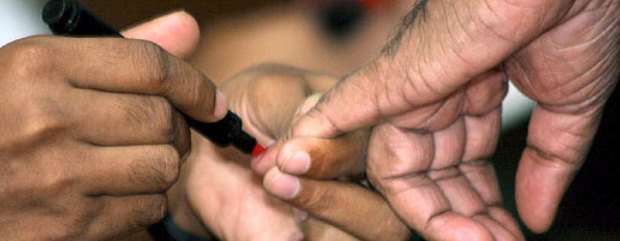BY Shaahidah Riza.
With talks of electoral reforms taking centre stage in the political arena and civil society platforms, Ceylon Today spoke to an expert on demarcating electoral boundaries, delimitation and its effect on minority communities.
A professional Land and Building Surveyor and the former Joint Secretary of the All Ceylon Muslim League, M.I.M Mohideen, also the former coordinating secretary of the Sri Lanka Muslim Congress (SLMC) under the leadership of late Minister Ashraff. He has also served as the coordinator, representing the minority Muslim community in the government delegation at peace talks with the LTTE in Oslo Norway. Mohideen, has worked as a Building Surveyor for several decades and simultaneously been involved with community centric welfare affairs; particular in the North and East during the Ealam war; has dedicated more than five decades of his life documenting minority grievances and their land related conflicts.
When the topic of delimitation and electoral reform was first raised, Mohideen’s swift response was that the right of the individual voter had been handed over to the party, rather unfairly, thus, the elected members of the Parliament were not answerable to the voters. Mohideen, quoting from Sri Lankan Muslims and Electoral Reforms published by the Al- Ceylan Muslim Documentation Centre and authored by himself, said, “The 1978 Constitution made a drastic change in the electoral method of representation encased in the 1948 and 1972 Constitutions. The Proportional Representation (PR) System together with the original 12.5% cut off point and the concept of district bonus seat went against the very spirit of the concept of representation according to the proportion of votes. The 1976 Delimitation Commission did not pay adequate attention to create smaller electorates, to ensure the Parliamentary representation of a substantial concentration of persons united by a community of interest; racial, religious or otherwise, but differing in one or more of these respects from the majority of the inhabitants of that area.”
Therefore, in areas such as Kandy, Teldeniya, Viyaluwa and Colombo West, the Delimitation Commission created constituencies with less than half the average number of voters in predominant majority Sinhalese areas. The substantial minority Muslim population living in Akkairaipattu in Ampara District was split in to two, thus, one section became part of the Sammanthurai electorate and the other a part of Pottuvil electorate, thus depriving an individual from successfully contesting from either district.
1981 Delimitation
The figures of the 1981 General Census were not released when the last 1981 Delimitation took place. Hence, similar to the 1976 Delimitation, the 160 territorial constituencies was maintained. 36 seats were added to the nine provinces; four seats for each province. The population or land area of each province was completely disregarded. 29 more seats were added on the basis of national PR. The total members of the Parliament thus, became 225.
The provisions of the 1978 Constitution with regard to the demarcation of electoral districts and the PR election system eliminated representatives from the minority communities outside the Northern and Eastern Provinces from the Legislature.
“There is a violation of Human Rights. In a parliamentary democracy the public participate in government activities through freely elected representatives. However, the 1978 Jayewardene Constitution has usurped this right from the majority of the minority communities. The proportional representation cannot be applied to by-elections. When vacancies occur, they are filled by party loyalists, without the consultation of the voters in the electorates”, Mohideen said.
Elected members
Recently, the number of elected members were reduced in Colombo and transferred to Gampaha, and the similar occurred in Monaragala where the number of elected members was transferred to Badulla. However, it transpired that the reduction was done without adequate study of the population of the communities in each respective area. The latest census took place in 2012.
Explaining in detail Mohideen once again quoted from Sri Lankan Muslims and Electoral Reforms, “The Election Commissioner must use a current census and reflect the percentage of the population showing the eligible voters. All the people of a certain population are not eligible to vote. If we got a population of 20 million, the voters will amount to15 million. It must be allocated according to the population so that we can determine how the people voted in order to make any adjustment. The present electoral system created seats in Colombo West, where the population was only 52,000. Where as in some other majority of the minority-areas, where, the population amounts to about 128,000 there are no seats. No two electoral districts are equal. For example in Kandy the number of voters in 1983 was 602,232 for 12 members or 50,186 voters per member. However, in the Vanni District there were 128,000 voters for five members or 25,718 voters per member. Thus, one voter in Vanni is equal to nearly two voters in Kandy”.
